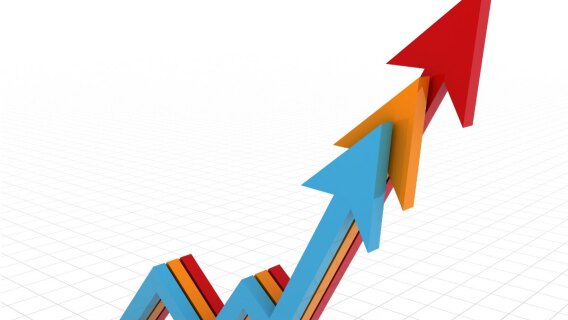According to 90 years of data, there is no stock market-economy correlation. So what does that mean for this year?
I wanted to start today with a few words about something I’m seeing a bit more in the headlines these days: That 2021 could bring some of the fastest economic growth in decades. Some economists think the year will bring north of 5% GDP expansion (Goldman Sachs thinks it could be 8%!) thanks to the re-opening/vaccine factor, another stimulus bill that passed, a Federal Reserve that’s determined to remain loose and a possible infrastructure bill, too.
That’s obviously good news for the stock market. Or is it? Is there really a stock market-economy correlation?
No. It turns out the market isn’t really linked to GDP growth at all—oftentimes they move in the opposite direction, as they did last year. I’m not a statistics guy, but Bloomberg had an article last June that looked at the correlation between GDP growth and equity returns on a year-by-year basis. A reading of 1.0 means the two would be fully in line; a reading of -1.0 would mean they move perfectly in opposite directions; and a reading of 0.0 means no correlation at all.
[text_ad]
Data Shows No Stock Market-Economy Correlation
Get this: From 1930 to 2019, the correlation between the economy and the stock market was … 0.09. And when looking at rolling 10-year periods, the stock market-economy correlation was actually -0.04—both basically saying there’s no correlation.
Why is that? Part of it is because the market looks ahead, and part of it is because the market trades on investor perception, and is thus subject to other factors like interest rates, war/peace, inflation, taxes and the like.
Don’t get me wrong—I’m longer-term bullish on the market, but it’s not because of any insights I have into the economy over the next few quarters. Instead, it’s due to some key price/volume things I’ve seen during the past few months, such as the blastoff-type indicators last November (those usually have a shelf life of a year or so) and the myriad longer-term (one- to five-year) breakouts late last year that should bode well down the road.
But the economy? You’re better off letting others guess about it. As always, your best clue to the market’s next move is the market itself.
Waiting for an Uptrend
So what is the market telling us? Let’s examine the evidence.
Right now, we’re about nine weeks into the downturn for the Nasdaq and growth stocks. On the plus side, now that some time has passed, I am seeing more potential setups—stocks that have built launching pads for two or three months and look ready to go. If all goes well, the just-underway earnings season could be a catalyst for some powerful breakouts.
But right now, I still see the onus being on the bulls—a ton of former leaders are still coughing up blood, the number of stocks hitting new lows is too elevated for comfort and I’m put off by the fact that investor sentiment hasn’t cooled off much. In a sense it’s like the opposite of a year ago.
That doesn’t mean I’m expecting doom (as written above, I remain quite optimistic about the market’s big-picture outlook in the next few months), but I continue to think less is more in this environment, especially with growth stocks. Trying to force it will likely lead to more pain and frustration.
As the famed Jesse Livermore once said, the big money is in the big swing—getting in early in a new, sustained advance for a young-ish growth stock and riding it for months (or years). That time will come again, and maybe sooner than many think depending on how this earnings season goes. But until then, it’s best to keep it light and let everyone else fight it out on a daily basis while we wait patiently for the next leaders to launch.
[author_ad]
*This post has been updated from an original version.

